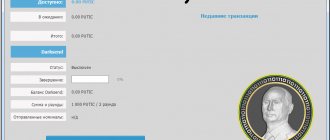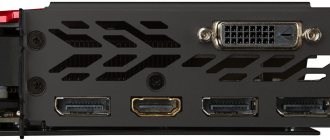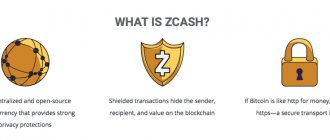LTC mining algorithm
Litecoins are mined using the SHA-256 algorithm. Litecoin mining is possible both on video cards (for example: Nvidia 1070Ti, 1080Ti), processors (Intel core I5 and I7), and on ASICs. ASICs made mining ltc more difficult and exposed the coin to the threat of centralization, which caused a great stir among investors.
The problem of the 51% attack still casts doubt on the entire crypto community. Investors are afraid of the centralization of the currency, so they are in no hurry to invest money in its development.
Mining Litecoin
Before examining a specific mining guide, let's consider the general situation around the process.
The profitability of mining depends on the current capacity of the equipment, the difficulty of mining and the cost.
If the ratio of these variables shows positive numbers, mining will be profitable, otherwise it’s not worth starting.
As we can see in the graph, the difficulty began to grow explosively after the rise in price in March 2020.
When the price reached $30+ per 1 LTC, litecoin mining on ASICs using the Scrypt algorithm, which had not been profitable until then, became profitable.
The connection of a large number of microprocessor computers caused an active increase in complexity.
Following this, the price continued to rise, since miners who had invested in equipment did not want to sell coins cheaply.
Today the situation has stabilized partly due to the fact that a sufficient number of noteworthy coin miners have appeared using the Scrypt algorithm.
The decline in interest from the owners of large computing power in Litecoin mining opens up the field for activity by smaller miners, as well as those who are taking their first steps in mining cryptocurrencies.
go
How to mine litecoin
Litecoin mining is carried out using:
- CPU based on Core I-5 or I-7. On younger models, production is unprofitable;
- GPU The list of video cards is extensive, but the most popular are the Nvidia 1080Ti. It is also possible to mine litecoin on an Nvidia fora, 1080, 1070, 1070Ti video card. AMD cards are not suitable for mining this coin;
- ASIC. The choice of ASICs is huge. They are mainly taken by those involved in cryptocurrency mining on an industrial scale. ASICs are characterized by high energy consumption, but their production performance is corresponding.
There are several options for mining:
- deploy your own Litecoin pool and mine solo;
- use a common pool and give a percentage of each payment;
- use cloud mining.
To use methods 1 and 2, you need to equip yourself with knowledge in the field of cryptocurrency mining. Setting up your own pool will take time and experience, but if you have powerful equipment, it will more than pay for itself. Solo mining is unprofitable due to the large number of deployed joint pools, where “prospectors” jointly find a block much faster.
When using your own or a shared pool, you will need a litecoin miner.
History of Litecoin
So how did this coin come about?
The new project was presented by Charles Lee in 2011. Initially, the creator of the cryptocurrency did not plan to release new coins. His main goal was to modernize Bitcoin. Improvement of the cue ball was required against the backdrop of negative feedback from its holders. Despite the rapid growth of its popularity, it was necessary to reduce the amount of time devoted to processing foreign exchange transactions. In addition, the coin was poorly protected from cyber attacks and had a small block volume.
That is why the creator of the new cryptocurrency decided to eliminate obvious problems and began to actively work on a way to modernize Bitcoin.
So, in 2011, on October 7, a new type of virtual money appeared - LTC. It was distinguished not only by reduced transaction times, but also by more efficient block generation and the use of the most advanced hashing methods.
After its first appearance on the Internet, the coin received great success. It was firmly able to take an honorable second place and was on the list of popular cryptocurrencies right after Bitcoin in terms of market capitalization. But today, the Litecoin cryptocurrency has lost its position to Ripple and Ethereum. However, even despite this fact, most users of the system continue to use the coin for exchange trading.
Interesting fact: the creator of the new coin worked on his project while working at Google. This person also made a significant contribution to such popular services as YouTube, Chrome OS, and Google Play. Charlie Lee left in 2013 to create and effectively promote the largest crypto exchange in the world. We are talking about Coinbase. But the creator does not abandon the modernization of his brainchild, Litecoin, but, on the contrary, continues to work on its improvement together with a team of the best technical specialists.
According to the developer, Litecoin is a silver coin (silver) in the cryptocurrency market, while Bitcoin is assigned a “gold” position.
In order to agree or refute this position, you should understand in more detail what is hidden under this cryptocurrency, what are its main differences from other coins, how to buy it, where it is better to store it and what progress in its use can be expected in the future.
Mining Litecoin using a PC
Mining on CPU
In order to mine ltc on a desktop computer, you will need special software. One option is 50miner. The program includes 4 well-known miners:
- Cgminer;
- Phoenix;
- Diablo;
- Poclbm.
A nice interface and ease of use make this program one of the best for Windows. The software has a user-friendly interface. To start mining, just enter your login and password, as well as indicate the wallet where the reward will be sent. 50miner independently determines the video card model and also recommends a less loaded pool.
When talking about litecoin mining programs, one cannot fail to mention Minerd. It mines Litecoin using CPU only, so it is not suitable for everyone. The program works as follows:
- you need to download the distribution;
- then register on the pool;
- then create a .bat file inside the program, and then indicate the number of processors involved in mining;
- launch the application and wait for production.
Everything that happens can be tracked in the web version of the pool. The transaction history, the amount earned, and the ability to change the password are available there.
Mining on GPU farms
Any joint pool is suitable for mining coins on video cards. One of the most popular is litecooinpool. Advantages of litecoinpool:
- 24-hour service;
- professional technical support who knows everything about cryptocurrency activities;
- low pool commission;
- a large number of miners;
- high hashrate;
The pool has been operating for seven years and has earned a positive reputation in the crypto community.
The mining algorithm for litecoinpool is as follows:
- go to the pool website;
- select your GPU hardware;
- the pool will provide a ready-made bat;
- insert it into your miner;
- launch the miner and expect profit.
Automatic generation of a body file is an extremely convenient solution. It saved the user from torment with settings. All you need to do is copy the contents of the file and run the mining software.
Changing Difficulty
It would seem that as technology develops, there is a continuous increase in the power and productivity of mining equipment. This means that the process of generating new blocks could be significantly accelerated. However, algorithmically, the Litecoin system is designed in such a way that one block is generated on average within 2.5 minutes. Therefore, in order not to go beyond a certain time period, as the productivity of miners increases, the difficulty of the Litecoin network increases accordingly. True, sometimes the difficulty can drop, as happened during a fire at one of the largest mining farms in Taiwan, when a large number of high-power equipment failed and mining productivity fell sharply. However, this was short-lived.
How can we explain the constant increase in network complexity? There are several reasons:
• The network architecture contains an algorithm for recalculating the difficulty after generating 2020 blocks. In order for the emission of cryptocurrency to occur evenly, after generating 2020 blocks, the system analyzes the speed of their production. If a given number of blocks are found in less than 84 hours, the difficulty of the Litecoin network increases automatically. If the specified time was not enough to generate the required number of blocks, the complexity is reduced.
• Depending on the complexity of the network, the reward for correct decisions when calculating blocks changes. Beginner miners are often surprised that with the same number of correct decisions they receive less reward, although the exchange rate remains unchanged. The thing is that the system accepts the number of balls required to find one block (on average, their number is approximately 3 million). However, due to the gradual increase in the complexity of the Litecoin network, this figure is constantly growing and 5 million solutions may be needed to find a block. It happens that during a period of a sharp drop in complexity, 1 million solutions are enough to generate the next block. As the complexity increases, the number of solutions increases, and the payment per share decreases accordingly. How, in such a case, can individual miners ensure that mining profitability is always maintained? The answer is quite simple and consists in applying the principles of collectivism. To increase the likelihood of mining a block, miners should join into pools, since mining on their own may require significantly more than 3 million solutions. In addition, as the complexity increases, the probability of generating a block decreases. Purely theoretically, the minimum complexity is equal to 1 conventional unit. However, it is not difficult to guess that it is purely symbolic. Meanwhile, the maximum value tends to infinity, therefore it is expressed by the number 2 raised to the 224th power. At litecoinpool.org/stats you can see the current difficulty of Litecoin online. Now it is 57218.81882735. This means that with a block reward of 25 LTC, a miner with 5000 kH/s hardware will be able to earn 0.043946 LTC, excluding pool fees.
In conclusion, it can be noted that for ordinary users, such calculations are incredibly complex and are of no interest. For them, the practical side of the issue is important. As is known, the difficulty of mining Litecoins (as well as Bitcoins) is gradually increasing and the number of virtual coins to be generated is also decreasing.
Mining LTC on ASICs
ASICs are considered the most profitable devices for mining, as they provide high altcoin mining power. Litecoin developers are actively fighting such devices, but the results are not impressive. Let's look at the issue using Antminer L3+ as an example. To start mining on ASIC, you need to take the following steps:
- Connect the device to the network. It requires 1 power cord and -9 cables that have six-pin connectors.
- After connecting the device, launch it, and then go to the Miner Configuration tab. All settings for further production are made on the tab.
- In the address bar you need to add the address of the pool where cryptocurrency will be mined.
- Next, in the “Worker” line, you must indicate the information requested by the pool. This can be either the device name or the user name. Check the information carefully, otherwise mining will be carried out on the device whose username was specified (different).
- After this procedure, in the password line, you must indicate the access data to the pool account.
After all the data is entered, ASIC begins automatic crypto mining. The “Miner Status” tab allows you to track all actions performed by the device over the last 24 hours.











